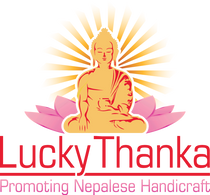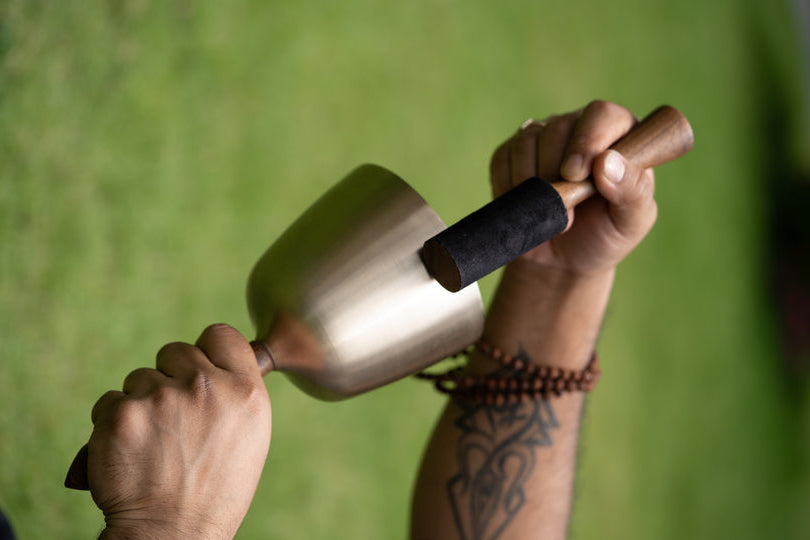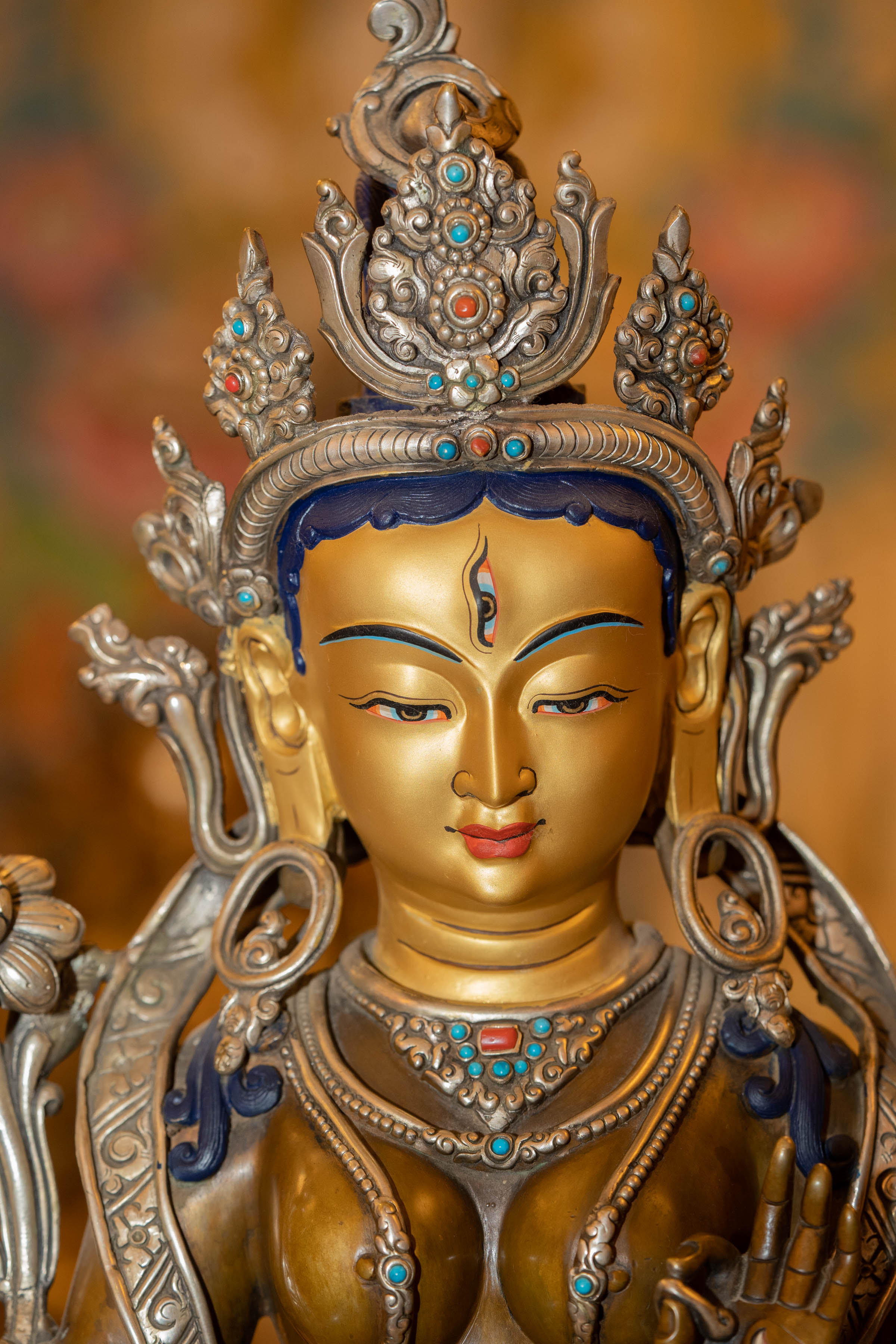Wrathful deities are shown as terrifying, demonic monsters in Tibetan art, and are frequently decorated with human skulls. Even though these terrifying pictures appear to violate Buddhist principles, they are neither wicked nor demonic powers. The wrathful deities, like the peaceful deities, represent the dynamic activity of an enlightened being, called forth to calm the restless desires and more unpleasant emotions in the human mind.
As a result, these deities' wisdom-wrath represents the victory over hate and other mental toxins poisons. Both ourselves and others suffer as a result of them. There are several vindictive gods in the Tibetan Book of the Dead, or Bardo Thodol. These are the negative karma that a person has accumulated during his life. Anyone who flees in terror is reincarnated in one of the lowest worlds. They can't hurt you if you have insight and realize that they're only projections of your own mind.
To achieve enlightenment, one must see all forms as expressions of primal purity. Every sound is an echo of nothingness, and every thought is a game of wisdom. It is not necessary to discriminate between attractive and unattractive, harmonic, and disruptive. Beauty is all around you, and you feel pleased and at ease all the time. Ordinary beauty brings pleasure, but spiritual beauty has a special worth. It instills in us the belief that enlightenment is both real and achievable. Sacred art, whether in the form of music, dancing, painting, or simply contemplation, strives to portray this beauty.

Wrathful deities are most often found in Tibetan Buddhism, however some of them have their origins in ancient Vedic religion and may be found in all Buddhist schools' texts.
Wrathful gods come in many different kinds and sizes, Dakinis are virtually always wrathful women who are shown naked, indicating escape from defilement, and are a common topic of tantric art. Their job is to help the practitioner change unpleasant emotions and thoughts into pure awareness.
There are serene and wrathful expressions of many great personalities. The Five Dhyani Buddhas, for example, have five wrathful opposites. These are the vidyarajas, or wisdom kings, they are dharma defenders who take on horrific forms in order to remove obstructions to enlightenment. The five are as follows:
Mahakala

Lord Shiva, the universe’s creator and destroyer is related to or shown as an incarnation of Mahakala, one of the eight guardian deities. Mahakala's ferocious stare may appear intimidating, but it isn't meant at you. Mahakala is the terrifying and strong incarnation of compassion's bodhisattva. Mahakala is a bodhisattva, an enlightened being who has chosen to postpone his ascension into heaven to help others achieve enlightenment. He is always portrayed as a ferocious and fearsome deity. His mission is to assist in the removal of negative barriers on the way to enlightenment, as well as to defend the path of righteousness (also known as "dharma") from impediments.
Mahakala's crown is made up of five skulls, which symbolise the transformation of five bad human traits into virtues. His crown of skulls neutralizes what remains and attempts to convert it into something beneficial as he faces bad energies and destroys them with his rage. As a result, ignorance transforms into wisdom, pride is humbled, attachment transforms into discerning wisdom, jealousy transforms into satisfaction with one's own accomplishments, and wrath is released and comforted.
Mahakala can be thought of as your spiritual bodyguard. He looks to be harsh and larger-than-life terrifying, yet he is someone you want on your side as you confront life's challenges. That furious face is only angry for a bigger good: your happiness, wisdom, and karmic well-being.
Yamantaka

Yamantaka is a ferocious incarnation of Manjushri, a Bodhisattva who takes this form in order to defeat Yama, the deity of death. The cycle of rebirths (samsara) that inhibits enlightenment is interrupted by overcoming Yama. Yamantaka is known for his blue skin and the many attributes listed below, which he shares with Mahakala. Five lesser manifestations encircle him, each a Yama-conqueror on a buffalo.
In Buddhism, there are a slew of other vengeful beings. To list all of them and describe all their variants and symbolic implications would require an encyclopedia. However, you may now appreciate what they genuinely signify when you encounter them in Buddhist art.
Yamantaka can be represented in with various factor. The deity’s hue is a deep blue. It represents his omnipresence of rage. Nobody can escape his wrath since he has nine faces, thirty-four limbs, and sixteen legs. With blazing eyebrows, eyelashes, and a beard, he has the face of a buffalo. Above the main head and between the two horns, a furious red visage appears. Manjushri's face is above that, young and a little enraged. Three faces appear on his right: blue in the middle, red in the right, and yellow on the left. On the left, there's a white center, a smoky-colored middle, and a smoky-colored Right and Black left. Each face of the deity has three eyes. The hair spikes upwards, and the face of the deity looks terrifying. The head of Yamantaka is adorned with five dried skulls.
Vajrayogini

Vajrayogini is a Tantric Buddhist goddess who embodies the road to feminine enlightenment. She's also a dakini ("sky dancer"), a phrase that refers to a feminine supernatural creature or a skilled yogini, and she's known as the queen of the dakinis. In Tantric Buddhism, or Vajrayana, she is known as Vajravarahi, and she is regarded as the greatest goddess, more adored than any male Buddha.
Vajrayogini is symbolized as the goddess of destruction and grace, the deity destroys illusion and ego. She is usually represented in a ferocious, blood-red appearance. Vajrayogini is frequently shown in a frightening pose, clutching a skull and a knife in her hands, her right leg extended out and her left slightly bent (alidha). Because she is encircled on all sides by cremation sites, the ordinary world has died in comparison to the rich world of inner existence and its undistorted sense of reality. Although she can be seen alone, she is commonly seen in union (yab-yum) with Heruka, who is known as Hevajra when he is joined with Vajrayogini.
Yoga of Vajrayogini Tantra is said to provide a quicker road to enlightenment. Vajrayogini's mantras and rituals have traditionally been kept secret, despite the fact that many mantras are now readily available on the internet and in publications.
Vajrapani

Vajrapani (Sanskrit: Thunderbolt-Bearer) is the guardian of the ngas (half-man, half-serpent deities) and occasionally takes on the form of a bird to fool their ancient foe, the hawklike Garua. In times of drought, he is summoned because of his connection to the rain-controlling ngas and the Hindu deity of rain, Indra.
Thunderbold bearer/ Vajrapani’s mantra emphasizes his status as a Bodhisattva who represents the energy of the enlightened mind. Vajrapani is shown as a wild dancer surrounded by flames, which symbolise metamorphosis. On his right hand, the deity carries a vajra/thunderbolt, indicating his ability to transcend illusion's darkness. Vajrapani appears enraged, yet as a symbol of the enlightened mind, he is absolutely devoid of anger.
The mantra of Vajrapani is just his name, which means "wielder of the thunderbolt," with the mystical syllables Om and H sandwiched in between. This mantra allows us to tap into the unstoppable force that Vajrapani represents. Of course, prior knowledge of Vajrapani is beneficial, while the mantra's sound is energizing in and of itself.
Heruka

Heruka is a Sanskrit term that can have a variety of meanings depending on whatever tantra it is used in. The Tibetan phrase for heruka is 'drag tung,' which literally translates to 'blood drinker.' He is a manifestation of the Buddha Aksobhya, whose picture is depicted on his hat. He has two arms, one holding a vajra (thunderbolt) and the other holding a kapala (skull cup) full with blood. He is known as Hevajra when he is shown in conjunction with the female consort Vajrayogini, and he is commonly revered in Tibet in this form.
The term Heruka has three different meanings in art and iconography, old tradition, new tradition, and Gelug tradition which are described below:
- Heruka refers to any male-meditational god who seems wrathful and has three faces, six limbs, four legs, wings, and a consort in the ancient tradition. There are eight Nyingma Heruka goddesses that are well-known. Some Revealed Treasure Traditions refer to deities with a semi-peaceful - semi-wrathful visage as Heruka.
- The name Heruka is used in the Sakya, Kagyu, Jonang, and other New Traditions to describe any complex Anuttarayoga male-meditational deity, whether benign or wrathful, who emerges in a simplified form with one face, two arms, and a spouse.
- In the Gelug Tradition, the name Heruka almost exclusively refers to Chakrasamvara, the multifaceted meditational god.
How These Wrathful Thangka Helps us in our Spiritual Learning?

Tibetan Buddhist practitioners rely on thangkas for a variety of purposes. The pictures are used to teach students and monks about many aspects of Buddha, as well as to depict major historical events and mythology related with important deities. During rituals and celebrations, devotional pictures serve as a focal point and are frequently employed as conduits for prayers and specific requests. Most significantly, thangka art is a useful meditation aid that provides a visual and cerebral stimulation manifestation of the divine.
In context of Deity thangkas, they are brimming with allusions and symbolism. Because the artwork is plainly religious, all symbols and references must follow the strict requirements of Buddhist scripture. The artist must be well-trained and have appropriate religious understanding, knowledge, and background to create a genuine and approved god thangka.
As the Thangka depicts Buddha's physical manifestations and distinctive characteristics, it may readily be converted into a meditational tool for anyone who seek to reflect on Buddha's life and existence.
Believers who concentrate on the sceneries and depictions on the wrathful god Thangka are said to obtain the ability to demolish impediments to enlightenment. According to ancient buddhist traditions, these thangkas if kept on the room, it protects against danger, misfortune, subduing adversaries, preventing mishap, and achieving one's goal if believed with an empty heart.



